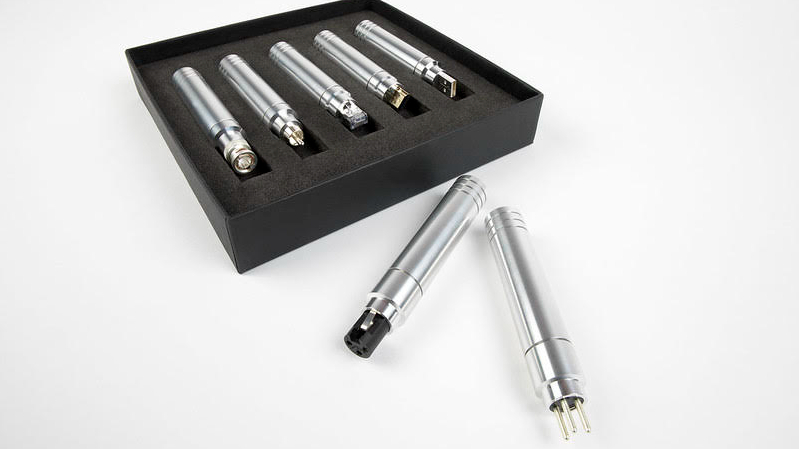Chord Company launches GroundARAY noise-reduction devices for your hi-fi separates
All thanks to a 'major new ARAY technology breakthrough' from Chord

Chord Company has announced a "major new development of its proprietary ARAY noise-reduction technology" with the introduction of its GroundARAY family of grounding devices. And you can see a video explaining the products below.
GroundARAY is, says the Wiltshire-based UK audio specialist, a high-frequency-noise-reduction device that connects to unused sockets on A/V equipment. It acts as a low-impedance route for high-frequency noise to pass through and consequently improves the noise floor of the ‘host’ product.
As you can see, GroundARAY comprises a cylindrical design, which is made from precision CNC-machined thick-walled aluminium – the thick walls themselves are designed to stop the device from contributing high-frequency noise. Each GroundARAY cylinder is filled with a carefully chosen material to deaden noise.
The connectors, adds Chord Company, are hand-built, with the final assembly then locked into place to reduce any effects from acoustic vibration.
The new clutch of grounding devices follows four years of further research and development by Chord into its proprietary ARAY technology, first seen in 2012 and used in the firm's TunedARAY mechanical tuning system and SuperARAY cable-specific noise-reduction. In 2017, Chord began working on a solution that would operate independently from cables, but work with them in helping to reduce HF noise on the signal ground. The result is the GroundARAY family.

GroundARAY is available in six termination options, including RCA, DIN, BNC, RJ45, USB Type-A and XLR-A for a wide range of digital and analogue components. Furthermore, the GroundARAY boasts five separate noise-reduction systems, all working across different high-frequency noise ranges and operating in parallel to convert undesirable HF electrical noise into heat.
The promise? A low-impedance, high-bandwidth route for high-frequency noise to pass into, effectively ‘pulling’ noise from the signal ground of the host equipment.
The latest hi-fi, home cinema and tech news, reviews, buying advice and deals, direct to your inbox.
Chord states that GroundARAYs are most effective when used across several devices in an A/V system. They simply plug into existing empty sockets and can be used individually, or in multiples, such as across left and right outputs. With DACs and streamers, GroundARAYs can be used with unused digital inputs. Chord adds that projectors and screens can also benefit from GroundARAY's noise-reduction effects, too.
And the pricing? GroundARAYs are available now, priced at £550 (about AU$1000).
MORE:
See our pick of 15 of the best turntable accessories for better vinyl sound
Peruse our recommended best hi-fi systems 2021: micro, hi-fi, vinyl
Fancy a film instead? Read 15 of the best movies on Netflix right now
Becky has been a full-time staff writer at What Hi-Fi? since March 2019. Prior to gaining her MA in Journalism in 2018, she freelanced as an arts critic alongside a 20-year career as a professional dancer and aerialist – any love of dance is of course tethered to a love of music. Becky has previously contributed to Stuff, FourFourTwo, This is Cabaret and The Stage. When not writing, she dances, spins in the air, drinks coffee, watches football or surfs in Cornwall with her other half – a football writer whose talent knows no bounds.
